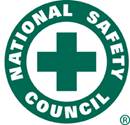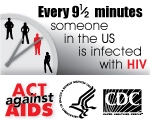CDC Partners
The National Safety Council

NSC's Web site
CDC's Partnership with NSC
About NSC
NSC's Priorities as a CDC Grantee
NSC's Accomplishments
CDC's Partnership with NSC
The National Safety Council (NSC) is a CDC business cooperative agreement grantee, currently in year 2 of a 5-year agreement started in 2007.
About NSC
NSC was founded in 1913 and formally recognized as a safety leader by an Act of Congress in 1953 that granted a Congressional Charter to the organization. Janet P. Froetscher is NSC's current president and chief executive officer.
NSC's mission is to prevent accidental injury and death through public education and save lives by preventing injuries and deaths at work, on the roads and in homes and communities. NSC engages organizations and individuals through its leadership and efforts in research, education and advocacy.
As a membership organization and primary national resource on industry trends, NSC's 55,000 member companies, representing 8.5 million employees, turn to the organization for professional development and strategies to advance safety as a core value.
NSC's strategic priorities are based on scientific research that allows it to better define and understand issues and trends in unintentional injuries and injury-related deaths, and develop programs to address these trends and, ultimately, save lives.
Through its nationwide network of 39 state and regional chapters, NSC invites members and the public to more fully engage in industry-specific injury prevention issues at the local level. Chapters identify safety needs of local interest and deliver community-based programs, services, trainings, conferences, workshops and consultations, and serve as a local voice for safety advocacy.
As a CDC grantee, NSC has the following priorities:
- Develop a national strategy to educate and influence NSC member companies to promote the concept that health and wellness must be integrated within worksite safety programs, and to highlight the need for companies to build a workplace culture of safety and health.
- Target 1,000 business leaders; human resource managers; and wellness, health, and safety professionals with the following:
- Information on best practices for employee health management and development of effective health and safety promotion programs;
- Development and delivery of Web-based safety and health decision support tools; and
- Webinars and seminars regarding emergency preparedness, off-the-job safety and health promotion.
- Disseminate information to business leaders about the need to protect the health of employees and their families and how to be an effective health purchaser, for the purpose of preventing and managing chronic health conditions.
- Build a National Emergency Alert Network (EAN) that has the capacity to send, in the event of a public health emergency, CDC information to more than 17,000 businesses in as little as two hours.
NSC's Accomplishments Specific to its Work with CDC
NSC and CDC tested the Emergency Health Network (EAN) in September 2008, during Hurricane Ike. The EAN system uses e-mail- and voice-messaging, built on the Send Word Now* platform. EAN is funded through CDC's cooperative agreement with NSC.
 EAN has the capacity to reach over 17,000 businesses. Messages sent via EAN are cleared with CDC to ensure that their content is scientifically accurate and credible to the community. The EAN database contains all critical infrastructure sectors including agriculture, forestry and fishing, manufacturing, large- and small-retail establishments, schools, healthcare, banking and insurance. The database is also populated with 8 million employees and their dependents.
EAN has the capacity to reach over 17,000 businesses. Messages sent via EAN are cleared with CDC to ensure that their content is scientifically accurate and credible to the community. The EAN database contains all critical infrastructure sectors including agriculture, forestry and fishing, manufacturing, large- and small-retail establishments, schools, healthcare, banking and insurance. The database is also populated with 8 million employees and their dependents.
EAN's test activation during Hurricane Ike addressed improper generator use that in the past has caused many deaths due to carbon monoxide poisoning. In response, the majority of EAN members agreed that EAN was a useful communication tool in preparing for, and staying informed during, public health emergencies, and wanted to remain members of EAN.
By working together to develop EAN, CDC has advanced its health protection goals of preparing people for emerging health threats. Furthermore, NSC has provided its members with timely, accurate and relevant health information. CDC and NSC will continue to develop EAN's capabilities and increase its database to include an even wider base of businesses.
Page last updated: March 16, 2009
Content source: Division of Partnerships and Strategic Alliances
Content owner: National Center for Health Marketing
* Links to non-federal organizations are provided solely as a service to our users. These links do not constitute an endorsement of these organizations or their programs by CDC or the federal government, and none should be inferred. CDC is not responsible for the content of the individual organization Web pages found at these links.

